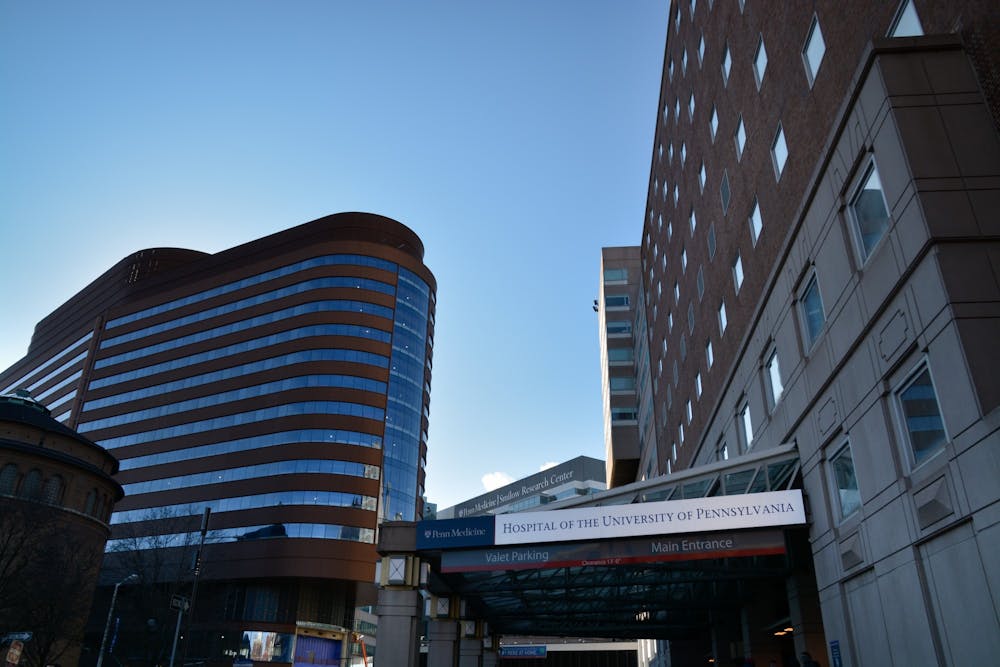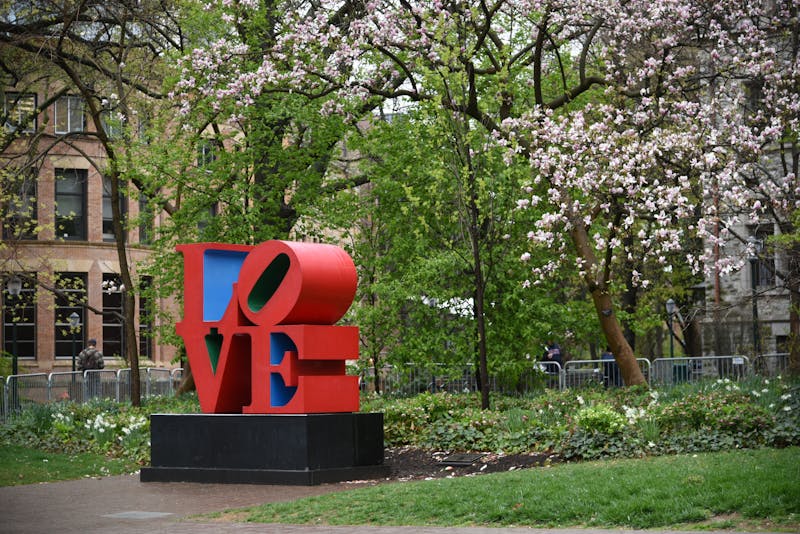
The Pavilion patient tower will allow for more intensive treatment space at HUP for high-risk coronavirus patients.
Credit: Kylie CooperAs numerous Pennsylvania counties operate under Governor Tom Wolf’s 'Stay at Home' order to reduce the spread of COVID-19, hundreds of construction and project staff continue to work days and nights on-site to complete Penn's Pavilion patient tower ahead of schedule.
Construction of the $1.5 billion building has been accelerated to complete 120 of 500 planned patient rooms by mid-April of this year in order to accommodate increasing demands for medical resources amid the outbreak. Although the extra rooms may be used this spring, the entire tower will not be completed by then.
The original construction of the 17-story, 1.5 million-square-foot Pavilion building was scheduled for completion by February 2021 with expected patient occupancy five months afterward. It is the largest capital building project in Penn’s history and will serve as an extension of the Hospital of the University of Pennsylvania.
Although Wolf ordered many construction projects and “nonessential” businesses to immediately shut down by March 21, the Wolf administration and Philadelphia Building and Construction Trades Council later designated construction of the Pavilion and other healthcare facilities as “life-sustaining” operations.
The new rooms will be used for low-risk patients being treated at the Hospital of the University of Pennsylvania in order to allow for more intensive treatment space at HUP for high-risk coronavirus patients. Sixty rooms will serve as inpatient spaces for extended care and the other 60 will be in the emergency department of the building space.
“Understand that the patients that will be put in this building are not COVID patients," Penn Medicine Associate Vice President for Large Capital Projects Stephen Greulich said. "The whole idea here was to create more beds and more rooms so that we could move patients that are low acuity from the current hospital and thereby create more room in the existing hospital, which is more appropriately equipped to deal with COVID patients."
Before the COVID-19 crisis, 700 workers had originally been deployed to work on the Pavilion. Currently, there are about 500 workers employed to work on the site in three-shift rotations that span 24 hours a day, seven days a week. Before beginning their shift, each worker is screened by clinical staff and has their temperature taken to ensure safety against the COVID-19 outbreak.
According to Greulich, the number of workers on-site will continue to go down within the next couple weeks of construction.
In addition to the construction workers, Penn Medicine professional and hospital staff continue to visit the site to oversee the project and plan for the purchasing of beds, medical equipment, and supplies for the rooms.
In mid-March, Greulich said the University of Pennsylvania Health System CEO Kevin Mahoney asked him and his team to evaluate ways to decrease the influx of patients at HUP. After reviewing many different areas of the hospital, the project team was directed to work with construction crews on two specific areas of the Pavilion tower.
“It’s been really incredible to watch everybody, from the professional staff to the construction workers who are coming in at afternoons at three o’clock and working until 11 o’clock at night,” Greulich said.
Greulich said he is grateful for the staff's dedication to the project and their understanding of the virus' mounting severity.
"I hope we never have to use [the building] is what I really feel, but we will be prepared if and when we do," he said.
The Daily Pennsylvanian is an independent, student-run newspaper. Please consider making a donation to support the coverage that shapes the University. Your generosity ensures a future of strong journalism at Penn.
Donate







